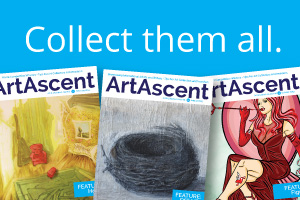Joyce Fox
The Summer Warning
I knew something was coming, and I waited. Throughout the Summer of 2019, I waited. I didn’t know what was coming – all I knew for certain was that it wasn’t anything good. That much I knew. When I tell you my roses gave me the message, you will imagine it a strange thing to say. But they did…
How often do human beings search for answers in nature? Sometimes, we see mysterious messages in vegetation, the sky, and animals. Clever writer Joyce Fox transports us into this forest of symbols through powerful poetic images.
The Summer Warning is a piece that reaches the reader on an implicit and subconscious level. Like the symbolism it deals with, it does not speak explicitly. Joyce selects every word to evoke sensations without telling too much. In the summer of 2019, according to the author, her roses were shivering even without a breath of air. Chills ran through them, even though the air was disturbingly still. Through this cinematic image, Joyce conveys the foreboding that something terrible is about to happen after the end of summer. She tells of her fear, her trembling, inspired by what was the 2020 pre-pandemic period: a time in which we were all still oblivious to the soon-to-unfold frightening, collective crisis.
Since ancient times, humans have been investigating nature by trying to predict the future. From the omens brought by snakes and birds, seen as messengers of rebirth or misfortune, to the formation of clouds or the study of trees, nature and its transformations have always revealed underlying messages in popular culture. Joyce instinctively taps into this tradition, using nature as a symbolic, poetic, and unsettling element.
Roses—that Joyce watered, fed, and kept healthy— became as delicate as the human bodies, revealing their fragilities. The text presents metaphors related to breathing and lack of air which bring the reader’s mind to the pandemic’s terrible respiratory effects.
From the stylistic and technical point of view, The Summer Warning astonishes with a great sense of rhythm. The rhythmicity makes the text somewhere between prose and poetic composition. Joyce developed a style in which repetition plays a relevant part. The formal repetition of words and constructs emphasizes the writing, contributing to creating attention and pathos. Joyce’s vocabulary is simple and immediate and fits into the pattern of literature that uses words to portray, not to show off.
The strength of her text lies in the images she creates: as powerful as photographs and metaphorical as lines of poetry. Joyce finds inspiration in authors such as Kent Haruf, the novelist who paints life in small towns of the United States through accurate descriptions. Likewise, her scenes become intimate, silent, and symbolic.
Joyce Fox is an 89-year-old writer who embodies elements of every day in her texts: the velvet petals and palest shades of pink of her roses. Her texts have been read on BBC radio, and she recently had an hourlong two-act musical broadcast on different local radio stations. The stories written by Joyce Fox transfigure reality. They give vent to fears, emotions, and human forebodings.
Joyce Fox is the Gold Writer of the ArtAscent Summer call for writers. To see the full body of work and profile, get a copy of the ArtAscent Art & Literature Journal Summer issue.




